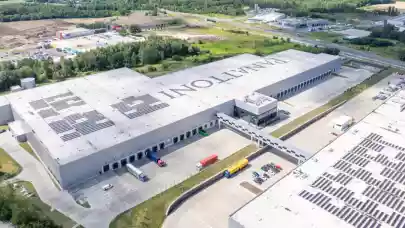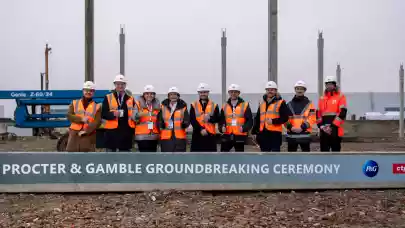
The demand for industrial spaces in CEE is moderating after a record year, with vacancy rates having slightly increased but still at a healthy level. The shift in demand patterns has included larger deals and tenant diversification. Despite challenges, logistics is an attractive asset class with yields comparable to offices and retail, revealed the discussion at CEE Property Forum 2024 in Vienna, chaired by Martin Polák, Managing Director CEE at GARBE Industrial Real Estate.
Nearshoring, driven by logistics costs and political risks, boosts demand in Central and Eastern Europe. „Where is the demand coming from right now?“ Martin opened the panel.
Alexandra Gačevičová, Commercial Director | Industrial & Logistics at BHM Group first listed the mild slowdown in demand for 2024, with rental growth stabilising and vacancy rates slightly increasing. „There is a shift in demand patterns,“ Alexandra continued. „We see that there are fewer deals, but they are larger. The demand is more evenly spread across all sectors, with retail becoming very strong again.“
Martin then questioned the implications of higher vacancy rates in markets like the Czech Republic. „We can also use a word correction, which is probably quite hard when some markets only reach three or 4% vacancy,“ he suggested.
Jaroslav Kopac, CEE Head of Valuation at iO Partners explained that while 10% vacancy was challenging, large landlords with large portfolios could absorb it better. „The cost to construct is still relatively high. So the landlords can stop or slow the development and wait to absorb this vacancy. So therefore we also don't see the headline rents going down,“ Jaroslav added.
Martin proposed that 10% vacancies were not the case in most markets, these were still in the range of three to five. „We can also see that for investors and banks, the asset class is still the favourite,“ he turned to the financial perspective.
Jaroslav agreed: „The perception of the industrial asset class is much better. It has matured. The yields are sometimes even better than offices or retail.“
Philipp Wick, Director of Industry & Logistics Operations at CC Real, highlighted the challenges of land scarcity and the need for new logistics sites. „When you look at the Austrian market, seven or eight years ago, there was no institutional developer on the market at all, and suddenly six or seven big names are fighting for dominance. It's going to get more and more difficult to construct new buildings, to find new spaces.“
Martin noted the long-term importance of logistics infrastructure, despite short-term challenges. „COVID showed us that we need all this infrastructure for comfortable shopping and convenience. This asset class should not be compared to others in terms of importance.“
Jaroslav emphasised the flexibility of logistics to adapt to trends such as green awareness on one side and the rise of manufacturing and EV suppliers on the other. „I think owning a logistic real estate will become more and more favourable as it will become more difficult to develop new and new warehouses,“ he added.
Ramona Eftime, Regional Lead for Tourism, Retail and Property, Europe at IFC - International Finance Corporation, shared the same point of view regarding the ESG standards and green buildings in emerging markets: „We want to understand how the companies will decarbonise their portfolios, how they will reach the net zero target. We have the tools to support our investors to reach that target.“
Martin highlighted the importance of automotive and e-commerce and asked: „Is there any dynamic change we can expect in the upcoming period?“
Alexandra shared her experience: „Apart from still strong demand from German companies and Western companies who are relocating to CE, we see a search of Asian companies who now understand that it just makes more sense to produce goods for Europe in Europe. There are several drivers of this change, such as logistics costs and extended transit times, among others. What is more, China is no longer the low-cost option it used to be. The labour costs are very comparable and sometimes higher than they are in some Central Eastern European countries.“
Phillip shared important facts: „Looking at the numbers, 7% of European GDP is the automotive industry. 13.8 million employees are working here. And at the moment, we're losing the battle against China in the electrification of the car industry. I am a bit of the devil's advocate, but there is a certain risk or a certain shift. We see that the German automotive industry is having issues. We will probably also see a decline in production companies and in logistic companies on that side.“
Martin mentioned that Poland is the biggest beneficiary of near-shoring. „What did they do better than other countries in the region?“ he asked.
„From our perspective, it is location, skilled labour and infrastructure,“ Ramona briefly summarised Poland's success.



